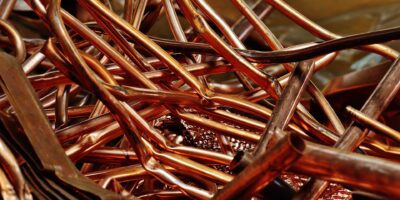10 Fun Facts About Volcanoes
Volcanoes occur when a rupture in the crust of a planetary-mass object, such as Earth, allows hot lava, volcanic ash, and gases to escape from a magma chamber below the surface. On Earth, volcanoes are most often found where tectonic plates are diverging or converging, and most are found underwater. For example, a mid-ocean ridge, such as the Mid-Atlantic Ridge, has volcanoes caused by divergent tectonic plates. In contrast, the Pacific Ring of Fire has volcanoes caused by convergent tectonic plates.
Scattered across the globe, volcanoes remind us of the fiery processes that shaped our planet. They are not merely passive formations of rock and lava; they are living entities, capable of unleashing immense power and creating breathtaking landscapes. In this article, we’ll delve into 10 fun facts about volcanoes, exploring their diverse forms, their role in shaping our planet, and the unique life forms that thrive in their harsh environments. We’ll uncover the science behind their eruptions, the impact they have on our weather and climate, and the potential they hold for renewable energy.
1. Volcanoes also occur on other planets
Volcanoes are not exclusive to Earth. They exist on other planets and celestial bodies as well, such as Mars, Venus, and Jupiter’s moon, Io. Mercury in particular has pyroclastic deposits formed by explosive volcanic activity.
Pyroclastic rocks are clastic rocks composed of rock fragments produced and ejected by explosive volcanic eruptions. The individual rock fragments are known as pyroclasts. Pyroclastic rocks are a type of volcaniclastic deposit, which are deposits made predominantly of volcanic particles.
2. Mauna Loa is the largest volcano on Earth
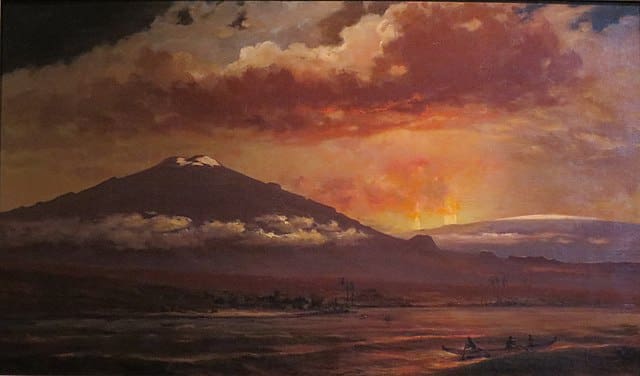
Charles Furneaux, Public domain, via Wikimedia Commons
Mauna Loa is one of five volcanoes that form the Island of Hawaii in the U.S. state of Hawaii in the Pacific Ocean. The largest subaerial volcano in both mass and volume, Mauna Loa has historically been considered the largest volcano on Earth, dwarfed only by Tamu Massif.
It is an active shield volcano with relatively gentle slopes, with a volume estimated at 18,000 cubic miles, although its peak is about 125 feet (38 m) lower than that of its neighbour, Mauna Kea. Lava eruptions from Mauna Loa are silica-poor and very fluid and tend to be non-explosive.
3. The Ring of Fire in the Pacific Ocean basin is known for its high volcanic activity
The Ring of Fire is a tectonic belt, about 40,000 km long and up to about 500 km wide, which circumscribes the Pacific Ocean.
It contains between 750 and 915 volcanoes, around two-thirds of the world’s total, and 90% of the world’s earthquakes, including 81% of its largest, take place within the belt.
4. Volcanoes are classified as Active, Dormant, and Extinct
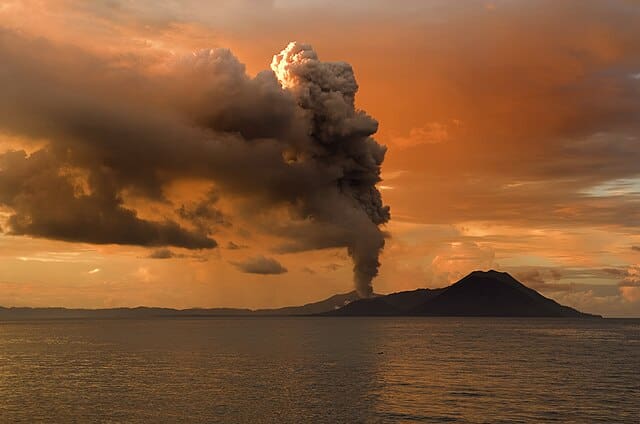
Taro Taylor edit by Richard Bartz, CC BY 2.0, via Wikimedia Commons
Volcanoes vary greatly in their level of activity, with individual volcanic systems having an eruption recurrence ranging from several times a year to once in tens of thousands of years. Volcanoes can be classified as active (erupting), dormant (inactive but could erupt again), or extinct (no longer capable of erupting).
The level of activity of most volcanoes falls upon a graduated spectrum, with much overlap between categories, and does not always fit neatly into only one of these three separate categories.
5. The eruption of Krakatoa in 1883 is one of the most powerful volcanic eruptions in recorded history
The 1883 eruption of Krakatoa in the Sunda Strait occurred from 20 May until 21 October 1883, peaking in the late morning hours of 27 August when over 70% of the island of Krakatoa and its surrounding archipelago were destroyed as it collapsed into a caldera.
The eruption was one of the deadliest and most destructive volcanic events in recorded history. The explosion was heard 3,110 kilometres away in Perth, Western Australia, and Rodrigues near Mauritius, 4,800 kilometres (3,000 mi) away. The acoustic pressure wave circled the globe more than three times. At least 36,417 deaths are attributed to the eruption and the tsunamis it created.
6. Iceland is one of the most volcanically active places on Earth
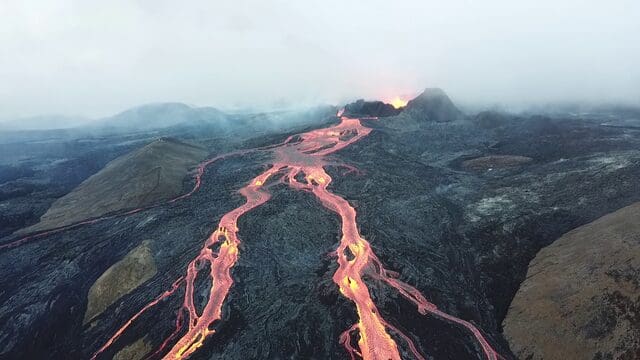
Mokslo Sriuba, CC BY-SA 4.0, via Wikimedia Commons
Iceland has experienced numerous eruptions occurring over the centuries. Subglacial volcanoes develop underneath icecaps. They are made up of lava plateaus capping extensive pillow lavas and palagonite. These volcanoes are also called Table Mountains, tuyas, or in Iceland mobergs.
Very good examples of this type of volcano can be seen in Iceland and in British Columbia. Black smokers are evidence of this kind of volcanic activity. Where the mid-oceanic ridge is above sea level, volcanic islands are formed, such as Iceland.
7. The word volcano is derived from the name of Vulcano from Italy
The word volcano is derived from the name of Vulcano, a volcanic island in the Aeolian Islands of Italy whose name in turn comes from Vulcan, the god of fire in Roman mythology.
Vulcan is the god of fire including the fire of volcanoes, deserts, metalworking and the forge in ancient Roman religion and myth. He is often depicted with a blacksmith’s hammer.
8. Yellowstone National Park in the United States is home to a supervolcano
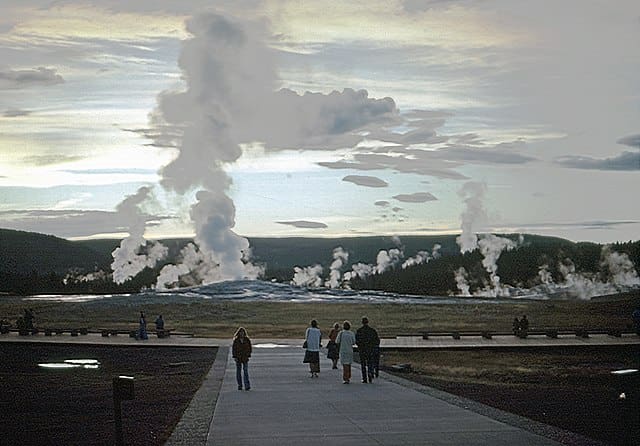
Tequask, CC BY-SA 4.0, via Wikimedia Commons
The Yellowstone Supervolcano has had three massive eruptions in the past two million years. It was established by the 42nd U.S. Congress with the Yellowstone National Park Protection Act and signed into law by President Ulysses S. Grant on March 1, 1872. Yellowstone was the first national park in the U.S. and is also widely held to be the first national park in the world. The park is known for its wildlife and its many geothermal features, especially the Old Faithful geyser, one of its most popular.
Yellowstone National Park spans an area of 3,468.4 sq mi, comprising lakes, canyons, rivers, and mountain ranges. Yellowstone Lake is one of the largest high-elevation lakes in North America and is centred over the Yellowstone Caldera, the largest supervolcano on the continent. The caldera is considered a dormant volcano. It has erupted with tremendous force several times in the last two million years.
9. Volcanoes result in highly fertile Volcanic soil
Volcanic ash and weathered basalt produce some of the most fertile soil in the world, rich in nutrients such as iron, magnesium, potassium, calcium, and phosphorus.
Volcanic activity is responsible for emplacing valuable mineral resources, such as metal ores. It is accompanied by high rates of heat flow from the Earth’s interior. Regions with volcanic soil, like parts of Italy, are known for their fertile lands.
10. Volcanic eruptions can produce volcanic lightning
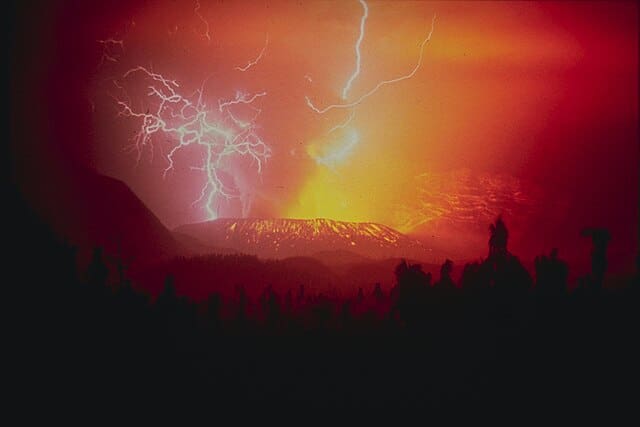
R. Hadian, U.S. Geological Survey, Public domain, via Wikimedia Commons
This is a phenomenon caused by static electricity generated by the interaction of ash, dust, and gas in the eruption plume. Changes in the planet’s atmosphere and observations of lightning have been attributed to ongoing volcanic eruptions.
Despite their destructive potential, volcanoes are also a source of beauty, wonder, and scientific fascination. They teach us about the power of nature, the resilience of life, and the ever-changing face of our planet.
Planning a trip to Paris ? Get ready !
These are Amazon’s best-selling travel products that you may need for coming to Paris.
Bookstore
- The best travel book : Rick Steves – Paris 2023 – Learn more here
- Fodor’s Paris 2024 – Learn more here
Travel Gear
- Venture Pal Lightweight Backpack – Learn more here
- Samsonite Winfield 2 28″ Luggage – Learn more here
- Swig Savvy’s Stainless Steel Insulated Water Bottle – Learn more here
Check Amazon’s best-seller list for the most popular travel accessories. We sometimes read this list just to find out what new travel products people are buying.


